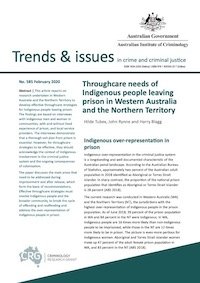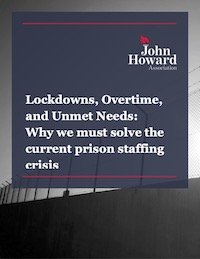By Charles Fain Lehman
In 2019, then-mayor Bill de Blasio introduced, and the New York City Council approved, plans to close the jail complex on Rikers Island and replace it with four jails in Manhattan, Brooklyn, the Bronx, and Queens. Construction on these borough-based jails is expected to be completed in 2027, at which time the city is expected to shutter Rikers entirely. In doing so, it will replace a system with a maximum capacity of nearly 15,000 beds with one that can hold just 3,300 detainees on a given day. That capacity is, by any measure, extremely small, representing a daily population seldom seen on Rikers since its opening a century ago. Even after more than half a decade of deliberate incarceration, the jail’s daily population today sits between 5,500 and 6,000, far greater than the borough-based jails’ allotment. Can New York City operate a jail system with just 3,300 beds without either: a) dangerous, likely illegal, overcrowding? or b) making the city less safe? This report argues that the answer is no. To reach this conclusion, it recounts how the 3,300-bed figure was arrived at, which had more to do with politics than with any reasonable projection of required capacity. It then details the research on the effects of pretrial detention, investigates who is currently on Rikers and who could safely be released, and estimates the relationship between crime rates and jail population. The bottom line: under almost no conceivable scenario can the city expect to safely and sustainably reduce the daily jail population to 3,300—never mind, to reduce it below that figure. Given the city’s commitment to closing Rikers, this report concludes by looking at potential sources of alternative capacity, including refurbishing or repurchasing closed jails; constructing small additional borough jails; and “boarding out” detainees to Long Island and Westchester County. These solutions could buy additional capacity for the system but not enough to provide adequate and safe housing for even the current, much-reduced population. In light of this, the report briefly revisits the case for keeping some of Rikers open In 2019, then-mayor Bill de Blasio introduced, and the New York City Council approved, plans to close the jail complex on Rikers Island and replace it with four jails in Manhattan, Brook lyn, the Bronx, and Queens. Construction on these borough-based jails is expected to be completed in 2027, at which time the city is expected to shutter Rikers entirely. In so doing, it will replace a system with a maximum capacity of nearly 15,000 beds with one that can hold just 3,300 detainees on a given day. That capacity is, by any measure, extremely small, representing a daily population rarely seen on Rikers since its opening a century ago. Even after more than half a decade of deliberate incarceration, the jail’s daily population today sits between 5,500 and 6,000, far greater than the borough-based jails’ allotment. Can New York City operate a jail system with just 3,300 beds without either: a) dangerous, likely illegal, overcrowding? or b) making the city less safe? This report argues that the answer is no. To reach this conclusion, it recounts how the 3,300-bed figure was arrived at, which had more to do with politics than with any reasonable projection of required capacity. It then details the research on the effects of pretrial detention, investigates who is currently on Rikers and who could safely be released, and estimates the relationship between crime rates and jail population. The bottom line: under almost no conceivable scenario can the city expect to safely and sustainably reduce the daily jail population to 3,300—never mind, to reduce it below that figure. Given the city’s commitment to closing Rikers, this report concludes by looking at potential sources of alternative capacity, including refurbishing or repurchasing closed jails; constructing small additional borough jails; and “boarding out” detainees to Long Island and Westchester County. These solutions could buy additional capacity for the system but not enough to provide adequate and safe housing for even the current, much-reduced population. In light of this, the report briefly revisits the case for keeping some of Rikers open
New York: The Manhattan Institute, 2022. 34p.





















